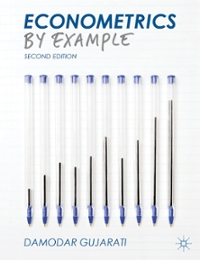Question
Read the following passage carefully and respond to the questions at the end of it: If firms incur a cost to exit the market, they
Read the following passage carefully and respond to the questions at the end of it:
If firms incur a cost to exit the market, they may not shut down in the short run even if their revenues do not cover variables costs. The firms stay in operation, at least for a while, so that they can avoid paying the exit costs. For decades, many integrated U.S. steel millsfactories that produce steel from iron orewere operating at losses. Before the 1950s, U.S. firms could produce at lower costs than international rivals despite having high wages because their mills were more productive and abundant supplies of coal and iron ore kept their energy and material costs relatively low. In the 1950s and 1960s, discoveries of rich iron ore sources, lower wages, and newly built, state-of-the-art mills enabled many foreign steel firms to produce at lower cost than U.S. firms. As a result, the share of worldwide sales of U.S. integrated steel firms fell from 90 percent in 1960 to less than 65 percent in the 1980s. U.S. firms have been too slow to leave the market. Not until the late 1970s did Youngstown Sheet & Tube and the United States Steel Corporation in Youngstown, Ohio close. The next closing did not occur until 1982. Rather than close, firms have continued to operate aging, inefficient, and unprofitable plants. A steel firm faces substantial costs in closing a mill and terminating contracts. Union contracts obligate the firm to pay workers severance pay, supplemental unemployment benefits, and make payments to cover additional pensions and insurance benefits in the future. Usually, union members are eligible for pensions when their age plus years of service equals 75; however, workers laid off due to plant closings are eligible when their age plus years of service equals 70. Thus by not closing plants, firms can substantially reduce pension payments. The United States Steel Corporation's cost of closing down various operations in 1979 was $650 million, of which about $415 millionor $37,000 per laid-off workerwas labor related. These costs have risen 45 percent since then. Because they avoided shutting down to avoid exit costs, U.S. steel mills have sold most products at prices below average variable cost since the 1970s. For example, in 1986, the average variable cost of hot-rolled sheets per ton was $305 and the average cost was $406, but the price was only $273. Many of these mills stayed in business for decades despite sizable losses. Eventually, these mills will close unless the recent increase in profitability in the industry continues.
a. Can you think of other firms or industries that would suffer large shutdown costs? What would be the source of these costs?
b. Is it possible that the firms are playing a "waiting game" to see if others will drop out before them? Under what circumstances might this allow a remaining firm to become profitable again?
Step by Step Solution
There are 3 Steps involved in it
Step: 1

Get Instant Access to Expert-Tailored Solutions
See step-by-step solutions with expert insights and AI powered tools for academic success
Step: 2

Step: 3

Ace Your Homework with AI
Get the answers you need in no time with our AI-driven, step-by-step assistance
Get Started


